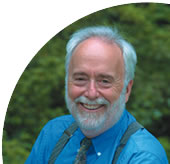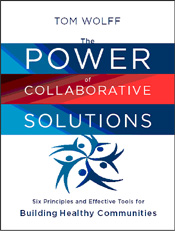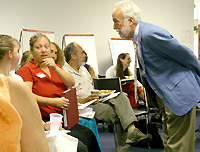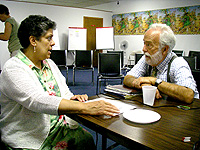Doing Democratic Governance Right February 24, 2011
Posted by tomwolff in : Uncategorized , add a commentThis came across my desk from my good friend and colleague Bill Berkowitz and it is well worth checking out:
We find lots of helpful news in our inbox, but here’s one item that stands out. It’s a report titled “Beyond Civility: From Public Engagement to Problem Solving,” released just last month by the National League of Cities. Designed as “an action guide for city leaders,” it’s short (12 pages), research-based, and to the point.
The report offers seven principles for “doing democratic governance right.” More important, it gives multiple specific examples of how other communities are putting these principles into practice. Perhaps you could adapt some of these ideas for your own community.
You can find the report at:
http://www.nlc.org/ASSETS/B5FAD9F7F4B84A2E93D8DB388FA8C700/RI_CivilityGuide2010_FINAL.pdf
The League has published many other reports along the same lines, and you might want to check these out as well while you’re at its main site, www.nlc.org.
The report presents seven principles to help city leaders build a culture of democratic governance in their communities:
MODEL CIVILITY
SHARPEN SKILLS
CREATE OPPORTUNITIES FOR INFORMED ENGAGEMENT
SUPPORT A CULTURE OF COMMUNITY INVOLVEMENT
MAKE THE MOST OF TECHNOLOGY
INCLUDE EVERYBODY
MAKE IT LAST
To add a comment CLICK HERE
Add a commentCommunity Tool Box Out of the Box Prize Winners Announced February 17, 2011
Posted by tomwolff in : Uncategorized , add a commentRecognizing grass-roots efforts to improve the lives of impoverished, marginalized populations around the globe was the goal of the first Out of the Box competition organized by the University of Kansas Work Group for Community Health and Development. Selected by an international panel of judges and then by public voting, the grand prize and second prize- winning projects are both located in Kenya in communities ravaged by civil unrest and the HIV/AIDS epidemic.
The $5000 grand prize winner is the Uhuru Child organization for its Jikaze Internally Displaced Persons Resettlement Village Project in Maai Mahiu, Central Province, Kenya. The project a sustainable re-settlement village for 900 internally displaced persons following the Kenyan post-election violence in 2008.
The village lacked consistent food and clean water supplies, access to health care, sufficient classrooms and funds for education. Half of the villagers were still living in tents. Within a year the group built 56 houses, planted 145 trees, sold 75 water filters at a subsidy, conducted three months of food relief in conjunction with the dispersal of 90 micro-finance loans and offered 22 educational scholarships to children in the community. As a result, every family has been moved out of tents and into houses, and no one has died of starvation, sickness or accident since the initiative began, according to Joe Heritage, Uhuru Child’s Project Manager. Since the distribution of the water filters, no child has become sick from water-borne diseases. Uhuru Child is an international community support organization that divides its efforts between America and Africa.
Uhuru Child tells their story in a beautiful and compelling video.
The $2,000 second prize winner, Fountain of Hope Youth Initiative, is a community-based social support organization that helps children, especially those affected by HIV/AIDS, have equal opportunity to compete academically and in extracurricular activities.
In 2007, the organization began to supply girls with sanitary pads in Kiambu, Kenya. Community workers discovered that the lack of sanitary pads was often the reason that girls from poor homes were struggling academically or even dropping out of school. The girls were often embarrassed and even ridiculed because of staining their uniforms during menstruation. Fountain of Hope organized donations of sanitary pads from community shops and supermarkets starting by asking for just a single packet of sanitary pads, according to James N. Waruiru, Fountain of Hope’s Project Coordinator. The initiative now supports more than 250 young women.
More than 300 projects in 42 countries – from Argentina to Zimbabwe – applied for the prizes that recognize outstanding community innovation efforts that stress low-cost, small-scale, non-technical solutions to local problems.
According to Stephen B. Fawcett, director of the Work Group for Community Health and Development that sponsors the Community Tool Box, the sheer number of projects submitted to the contest testifies to how much community innovation is underway in the far corners of the world. “The power of communities to take action is a wonderful thing to behold. The competition made it possible for people around the world to share what works and to inspire others to take action.”
For more details, and to view stories of others who are trail-blazing to improve life for people in their communities, we welcome you to visit the new Community Innovators’ page of the Community Tool Box. We hope that you will check back often, as we will be featuring additional stories of inspiration and change throughout the year.
You can add your COMMENTS HERE
Add a commentIs the grassroots community at your partnership table? February 7, 2011
Posted by tomwolff in : Uncategorized , add a commentI was recently leading a webinar for a new Federal initiative. Their focus is on health issues identified by the community as adversely affecting the health of women and girls. In the first phase of funding they were to spend a year doing a community needs assessment.
One major focus of my presentation was the necessity of engaging those most affected by their issues in all aspects of the project, not just the assessment but also program planning, implementation, and evaluation.
We had a lively exchange on this topic – who were those most affected by the issues they were assessing? Were they already at the partnership table? If not how could they get them there? And how could they keep them there? I also asked what actual roles will those most affected play in the partnership. To answer this last question I use a variation of the Arnstein Ladder of Participation that asks us to rate our level of engagement of the grassroots on a continuum from tokenism and decoration (lowest level) to shared decision making (highest level). (See The Power of Collaborative Solutions page 98-99). This made for a fascinating discussion.
These are all good questions to ask for your own work. These particular projects were very engaged in actively addressing these issues and getting the community to the table.
How would you answer these questions for your own community work?
For me it highlighted once again how much we in community health and development espouse the idea of having the grassroots at the table as equal partners and how seldom we actually practice it.
How often do you sit at a partnership /coalition/collaboration table and actually see a decent number of representatives from what we often call the “target population” or those most affected by the issue? (By the way – how would you like to be called a “target population”?)
How often does any one in your community go door-to-door in your neighborhoods and ask the residents what they see as the issues and what they see as the strengths of their community? And how they can work with us to solve the emerging issues? In my experience this is happening less and less. Why is that? How can we function effectively without doing the above?
I am very concerned that we are not talking with those most affected because it means we can’t possibly truly understand their issues, find the appropriate solutions, get community buy-in to the solutions and finally hope for any community sustainability. All these steps are crucial to successful intervention and all REQUIRE having the community at the table with us.
As community organizers and developers we used to actually be on the streets and in the neighborhoods, what happened?
In one of my next blogs I will talk about four possible solutions,
Do you have the grassroots community at the table for your work? How did you make that happen? How can we all bring the community to the table for shared decision making?
To add a comment Click Here
The Power of Collaborative Solutions – the early foundations January 24, 2011
Posted by tomwolff in : Coalition Building, Collaborative Solutions , add a comment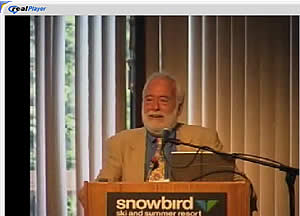 Coalition beginnings and why they matter
Coalition beginnings and why they matter
How did your coalition start up? What was the driving force? And does that piece of history really matter now?
Coalitions start up in many ways. Some emerge organically from the community in response to a crisis. Others result from a funding opportunity that requires a “partnership”. So does it matter how your coalition began and what the driving force was? Can it still matter years later? The answer is emphatically “Yes”. History matters.
I recently presented at a conference on coalitions, “Stronger Together: The Power of Collaborative Solutions for Building Healthy Communities”, organized by the Non-Profit Center of Milwaukee. Following my keynote I was the discussant for a panel of local coalitions. Our first question for the panelists concerned the driving force that led to their coalition starting up. The answers were fascinating for their variety:
- One started as a mandate from a federal funding source with the responsibility for distributing federal funds locally.
- Another was a response to a local crisis, namely an increase in local homicides
- A third emerged from facility, and space pressures faced by an agency that they couldn’t solve on their own. So they brought in partners to share space and programming
- A fourth was a Mayor’s initiative in response to the local foreclosure crisis
- And the final example emerged from neighborhoods and settlement houses focusing on youth
As our discussion proceeded it became apparent that history matters. As a clinician I was trained to understand the histories of my clients, so I brought that assumption to my coalition work and found that here too we need to understand the history of our communities and our coalitions.
Some examples:
The early role of the grassroots: Coalitions that start from grassroots community action carry that legacy and its’ commitment to having residents at the table as powerful partners. Even as they add the provider community that legacy remains. Whereas coalitions that begin as agency or government driven will often add residents later on but their history of being aa after thought often has residents feeling as if they are second class citizens and can be hard to overcome (although I have seen it done).
The early role of funding: Some coalitions start around funding; others start around a community need and have no money. This also creates a legacy. When the funded coalition loses its money it often closes down – it cannot imagine doing business without funding and staff. Whereas grassroots coalitions that get money and then lose it can return to its original roots of operating without funding.
So how has history of your beginnings left a legacy for your coalition?
To comment click “Add a Comment“.
Add a commentThe Power of Collaborative Solutions – Global applications January 14, 2011
Posted by tomwolff in : Coalition Building, Collaborative Solutions , 1 comment so farOut of the Box Prize: Now YOU can help choose the winners from among ten amazing global innovations.
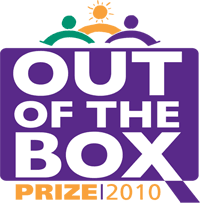 For many years I have been a partner and contributor with the Community Tool Box (CTB) (ctb.edu.ku) team on the development of this rich web site with 7,000 pages of free downloadable material on community health and development. The CTB is used by hundreds of thousands community members from around the world.
For many years I have been a partner and contributor with the Community Tool Box (CTB) (ctb.edu.ku) team on the development of this rich web site with 7,000 pages of free downloadable material on community health and development. The CTB is used by hundreds of thousands community members from around the world.
With this global view in mind, the CTB established the Out of the Box Prize to honor innovative approaches to promoting community health and development worldwide. By the closing date of October 31, we were overwhelmed by the positive response we had received – more than 300 groups from 42 countries had applied! Applicants came in from around the globe – from the Americas to Zambia, and many countries in between. Applicants’ work included efforts to improve community health and development in a variety of creative ways — addressing issues of importance to communities including the environment, HIV/AIDS, addressing Millennium Development Goals, rallying neighborhoods together for change, and improving the public’s health.
Now all of you can be part of the process of picking the top finalists! After making difficult decisions our international panel of judges has narrowed the list to the top ten and now it is time for the public to pick the finalist. So become part of the process. You can review the inspiring innovations of the ten finalists by visiting http://ctb.ku.edu/en/out_of_the_box/finalists.aspx. We also invite you to vote for up to three of your favorite projects to receive the Grand Prize of $5,000 or the Second Prize of $2,000. To vote, simply go to http://www.surveymonkey.com/s/PCMD7Z8. (Voting ends on January 31, 2011 and winners will be announced February 15, 2011.)
You will really enjoy reading about these amazing community innovations.
As someone who read many of the applications a number of trends in the best submissions struck me:
They are asset based – They demonstrate deep respect for the communities they worked with. The start with the assumption that the residents have the skills to do the work.
They employ grassroots models: The interventions were delivered by the community residents themselves.
They promoted clear cost effective solutions.
Sustainability was built in – the interventions were designed to be self sustaining from the start
They took a community wide perspective .They understood the vast scope of the issues and that the problems the sought to address exist in a context of the broader social determinants of health.
So which of the top ten inspired you the most?
To comment click “Add a Comment“
To read comments click here Read a Comment
1 comment so farThe Power of Collaborative Solutions: Does Spirituality have a role? January 10, 2011
Posted by tomwolff in : Collaborative Solutions, Spirituality , add a commentSpirituality – a key force in community building and collaborative solutions
 The publication of The Power of Collaborative Solutions has led to numerous requests to speak, consult and train across the US and indeed all around the hemisphere – British Virgin Islands, Mexico, Ottawa and within the US to San Diego, LA, Milwaukee, Kansas, Vermont, and multiple sites in my home state of Massachusetts. The past year has been a a whirlwind.
The publication of The Power of Collaborative Solutions has led to numerous requests to speak, consult and train across the US and indeed all around the hemisphere – British Virgin Islands, Mexico, Ottawa and within the US to San Diego, LA, Milwaukee, Kansas, Vermont, and multiple sites in my home state of Massachusetts. The past year has been a a whirlwind.
I have been gratified to receive so much heartfelt thanks for the book’s clarity, practicality, usefulness and inspiration. For me, some of the most interesting feedback has been about what has inspired readers. Here the focus has been on the last chapter of the book “Engaging Spirituality as Your Compass for Social Change”
People note how seldom we talk about spirituality in our community helping work. It is almost a taboo topic. Somehow, talking about spirituality seems to be likened to religion, and health and human service workers have told me that they don’t feel that that is appropriate and thus try not to go there. For many of us spirituality does not mean religion. I quote Leland Kaiser in my book who clarifies the difference:
“Spirituality is often confused with religion. They are very different things. Religion refers to a very specific set of beliefs, a tradition, a prescribed set of practices. Spirituality refers to a broad set of principles that transcend all religions. Spirituality is about the relationship between ourselves and something larger.”(p.200)
Once I open up the topic of spirituality in my talks or workshops or when people read about it in the book they frequently confide in me that their spirituality (however they define it) is central to their work in communities. It is why they do the work and is what keeps them going.
As I note in Chapter 8 “Spiritual principles can sustain us as we help communities move towards sharing abundance, honoring the natural environment, promoting social justice and compassion, and operating from a stance of collaboration rather than competition. A spiritual grounding lets us use loving compassion as a guide for our decision making. It helps us honor every member of our community as a valuable asset and appreciate resource”. (p.200)
How is your spirituality a part of your community work?
To comment click “Add a Comment“
Add a comment